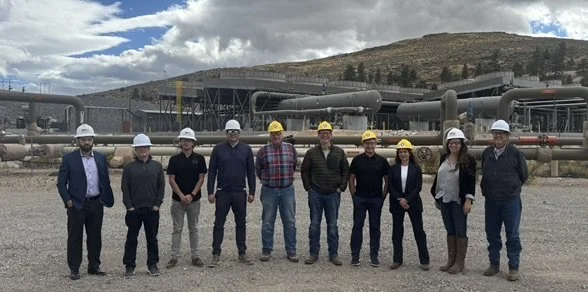This piece from Pinal County, AZ Supervisor Mike Goodman first ran in the Pinal Central on December 26, 2025 and can be accessed here.
Goodman: Growth, quality of life and energy
If you want to understand why our quality of life in Arizona continues to improve while our population continues to grow, energy is a big part of the answer.
For years, local and state officials have been applying Arizona’s pro-business attitude on other economic inputs — such as low taxes, commonsense regulations and a skilled workforce — to the energy that makes businesses run. From nuclear to solar, hydropower to natural gas, Arizona communities have an open attitude toward energy sources, and that makes them a magnet for new investment and jobs.
In just the past few years, Pinal County’s approach to energy has been a major factor in attracting major investments from the likes of LG Energy Solution, Kohler and Procter & Gamble. This approach has also supported the expansion of local small businesses and the creation of good-paying jobs that make communities attractive for working families.
For this reason, planning for future energy needs of our community and the local economy is a major priority for me as a member of the Pinal County Board of Supervisors. Recently, our board held a work session with officials from Arizona Public Service and SRP, the two major power providers for our region. It was a frank discussion about the region’s energy needs and how to go about meeting those needs.
APS is predicting a 40% increase in electricity demand in its service territory over the next six years. For its part, SRP predicts growth of 6% per year over the next decade — roughly double their current levels of demand. There is only one way to hit those kinds of numbers and keep electricity reliable and affordable — build as much new energy infrastructure as you can. And that appears to be what APS and SRP are doing. This includes natural gas turbines and pipelines to keep them supplied with fuel, solar energy and battery storage, and transmission lines to move electricity from where it’s generated to where it’s consumed.
Looking longer term, in the next decade and beyond, it also means a new generation of civilian nuclear reactors that are much smaller than reactors at the Palo Verde station — similar to those that have powered U.S. Navy aircraft carriers and submarines for decades. Nuclear will be another tool in our toolbox as we look to achieve balance in energy production. But in the short-term, both utilities also agreed that keeping the grid stable and electricity affordable will require more solar and battery storage projects.
With an “all of the above” generation mix, solar and battery projects in Arizona “stabilize energy prices” and “strengthen grid stability” by harnessing our state’s abundant sunshine, SRP Senior Manager of Resource Planning Bill McClellan told the board.
We have seen an increase of solar and battery projects in Pinal County, along with other energy-related investments, because we have good existing infrastructure, available land and proximity to some of the state’s most attractive and fastest growing communities.
Besides more reliable and affordable electricity, energy investments also benefit our communities in other ways, especially when it comes to funding essential public services. In Pinal County alone, SRP paid almost $36 million in property taxes last year, which provided funding for schools, fire departments and local law enforcement, among other needs. This is because generation facilities, power lines, electrical substations and other pieces of energy infrastructure have a high dollar value and add significantly to the county’s tax base.
I am hopeful that APS and SRP will more regularly communicate with the public about how fast energy demand is growing and what it will take to meet that demand. I shared that concern with APS and SRP during the work session and I hope they’ll act on it. Too often, it’s left to local officials to explain the merits of a proposed energy project, if they get explained at all. That’s a losing strategy that could cost Pinal County — and the rest of Arizona — its competitive edge. You can hardly blame people for opposing a project when they don’t know how it benefits their community and the rest of the state.
It’s also imperative that new energy developments work with surrounding residents to discuss improvements to roads and infrastructure in the area. These new facilities should preserve our beautiful landscapes and views. There is much that can be done to enhance existing communities and blend in, rather than take away from the environment we are so proud of.
Arizonans are smart and they’re pragmatic. They don’t take their quality of life for granted and they will do what is needed to maintain it. They just need all the relevant facts — and here in Pinal County, we need to deliver those facts to our citizens.
———
Mike Goodman, R-San Tan Valley, is a member of the Pinal County Board of Supervisors.















